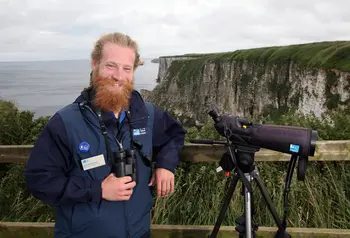How heritage is good for your mental health

Page last updated: 14 July 2022
Increasingly research from sectors including heritage, education and health shows that getting to know other people and connecting with the places we live leads to greater enjoyment of life and an improved sense of confidence and belonging.
We also know that the connections we make with each other and taking part in activities together improves our overall mental health. Moving from surviving to thriving is important for all of us as individuals and within our communities.
I’d like to share a great project that connects people and heritage and enables us all to extend relationships and thrive together.
Potter and Ponder
I was lucky enough to spend a recent bright March day outdoors at Croome, the National Trust landscape in Worcestershire designed by Capability Brown. As part of audience development work at the site supported by HLF the Trust created an outstanding sensory trail known as Potter and Ponder. A map of the trail is freely downloadable from the Croome website and available to all on arrival at Croome.
The process of how this trail developed is as fascinating as the trail itself. At Croome inclusion is understood as a constant process informed by partnerships and strong communication, an understanding that underpins the National Trust’s staff and volunteers’ approach to welcoming visitors.
Led along beautiful rope-bordered paths, sniffing the lemon-scented Daphne odora along the way, the Potter and Ponder map took us to areas with expansive views of the surrounding Malvern Hills where I gasped ’wow’ - echoing the profoundly learning disabled children who co-produced this trail with their teachers, families and National Trust staff.
Mapping joy
This exemplary resource ’maps joy’ in the Croome park and landscape and is one of the many ways Croome demonstrates inclusive approaches to participation and engagement.
Talking to Outdoors Manager Katherine Alker and Creative Partnerships Manager Rachel Sharpe I learnt about the years of work employing imaginative approaches, flexible teamwork and expertise that has been invested in welcoming people to Croome. They have invited rappers to perform personal responses to Croome history, worked with Worcester libraries to bring the Reading Challenge alive for over 10,000 children and have encouraged great family days out in this stunning landscape. As a result a wider range of audiences have been attracted to the site.
Back to ‘mapping joy’ - the wonderful term that informs the Potter and Ponder trail. I wanted to know more about the team and how we can all move from surviving to thriving. As the parent of an autistic child Rachel shared her commitment with Katherine to make Croome a welcoming site for families with a profoundly disabled family member. Katherine is flexible and very experienced in making visits a pleasure for everyone. Working together with children and young people who experience profound autism and learning and health disabilities and their teachers from local schools and support services, Rachel and Katherine, along with their National Trust colleagues Jo and Kiki, listened to the sounds and responses made by these non-verbal visitors during their trips to Croome. The team supported the children to commission an artist through Pallant House Gallery’s Outside In project, which provides a platform for artists who find it difficult to access the art world. They chose artist William Hanekom, who experiences autism, to design the trail based on these landscape responses.
Making great inclusive heritage sites
I was curious to pick up tips, asking Rachel and Katherine what other heritage colleagues need to have in place to make great inclusive heritage sites.
’Trust your instincts and ensure you get support from the top in taking creative risks,’ Katherine said. ‘Start with people first,’ added Rachel, going on to speak of ‘the critical role of relationships, trusting each other.’
Both spoke about the value of regular catch-up meetings, newsletters and briefings with the 43 staff (full time equivalent) and 500 volunteers who extend the welcome and share knowledge of Croome to over 270,000 visitors each year. This helps everyone understand each other’s teams and pressure points, leading to volunteer mentoring and overall joined up working, improving the welcome across the site.
Michael Forster-Smith, Croome General Manager, spoke of the senior management role he has in building an inclusive culture, demonstrating this by speaking at events involving younger visitors and encouraging staff to take positive risks as learning opportunities for professional development.
Back at my desk, I’ve got my Potter and Ponder map beside me, reminding me of the great day I had and of the thousands of Croome visitors who’ll be mapping joy and thriving too!
You can download the Potter and Ponder map from the National Trust’s website.
Thriving in Scarborough
In another demonstration of the power of heritage in supporting positive mental health, HLF were very happy to catch up with Leo Kokoszko , RSPB volunteer who featured in our Changing Lives series last year when he was working at Bempton Cliffs in Yorkshire.
We’re really pleased to hear that Leo is now working in a paid role at the Sealife Centre in Scarborough, engaging with the public and introducing the displays to them - congratulations Leo!
HLF will be continuing to profile the role of positive mental health in heritage throughout 2017. In the meantime, here’s wishing everyone a great Mental Health Awareness Week.
You might also be interested in...




